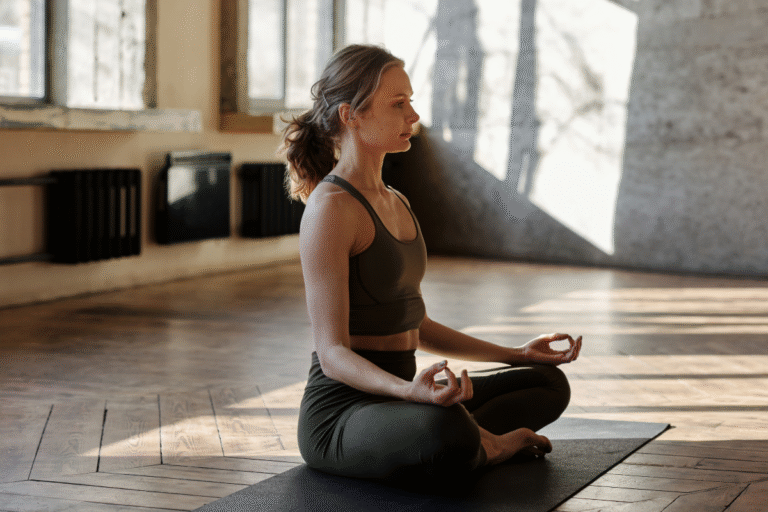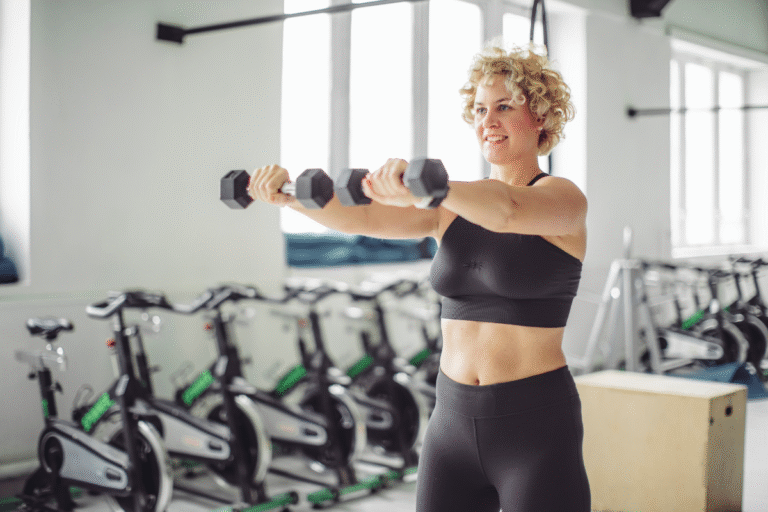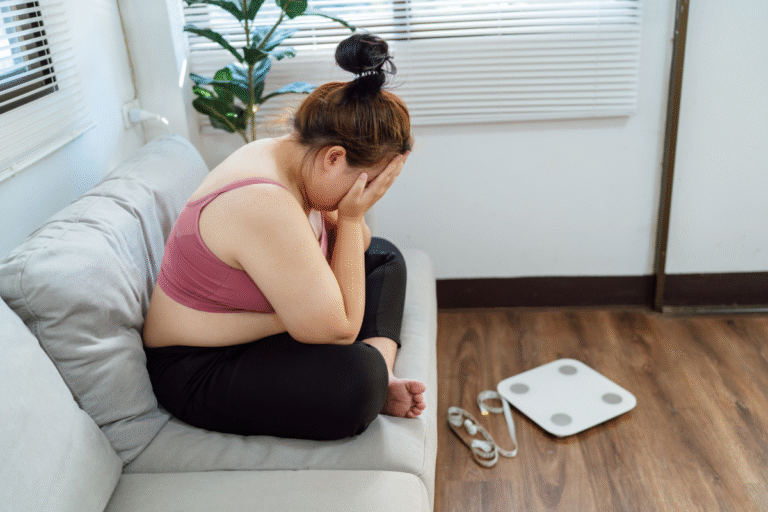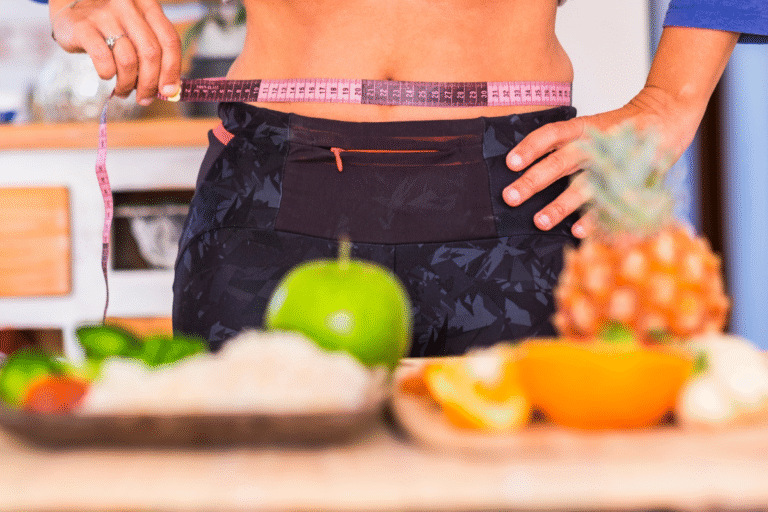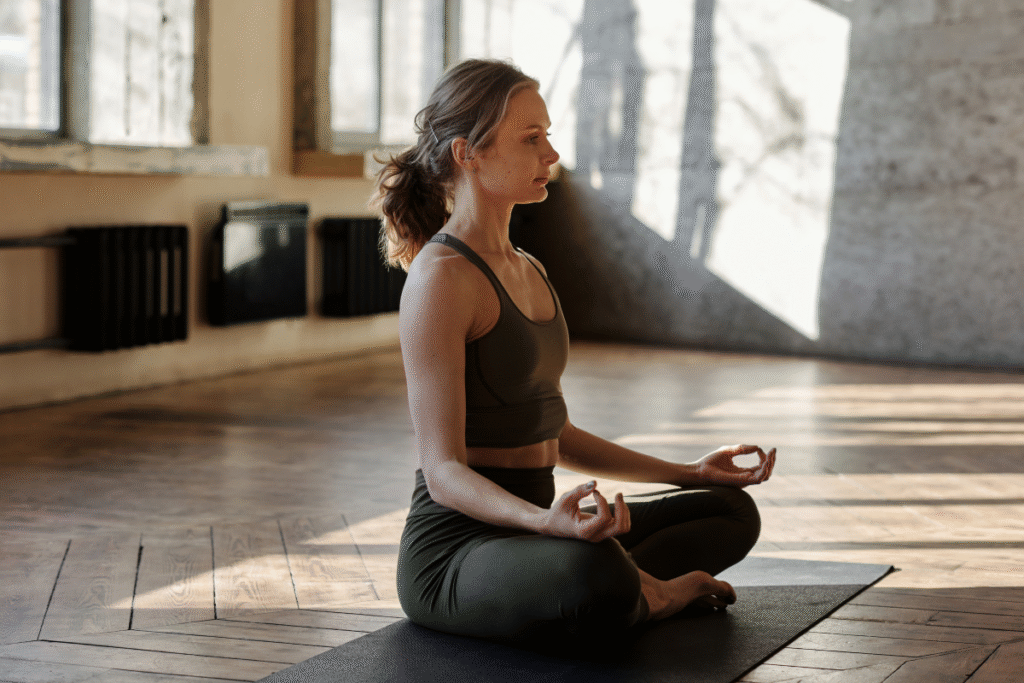
“I never thought of myself as a ‘yoga person’—until I hit my 40s.”
That’s what one of my clients told me after adding just two short yoga sessions to her weekly routine.
She’d tried everything to ease her anxiety, reduce joint pain, and improve her sleep. And while strength training and nutrition were part of her plan, it wasn’t until she embraced yoga that her nervous system finally exhaled.
Yoga isn’t just about stretching—it’s about restoring balance to your mind and body during a time when both are constantly shifting.
🌸 Why Yoga Matters More After 35
From your mid-30s onward, your body starts to experience subtle hormonal changes that can create ripple effects in nearly every system:
- Cortisol climbs
- Estrogen and progesterone fluctuate
- Sleep quality declines
- Joints and connective tissue feel stiffer
- Mental clarity and emotional regulation become harder to access
Yoga helps counteract those shifts by doing what medications and workouts often can’t:
✔️ Calming your nervous system
✔️ Improving mobility and flexibility
✔️ Supporting circulation and lymphatic flow
✔️ Enhancing self-awareness, breath, and emotional regulation
🧬 The Science: How Yoga Supports Hormone Health and Metabolism
Multiple studies have shown that regular yoga practice can:
- Reduce cortisol and other stress markers
- Improve insulin sensitivity and blood sugar balance
- Support thyroid function
- Increase GABA (a calming brain chemical) which improves anxiety and sleep
- Improve bone density and balance with weight-bearing poses
All of these benefits are critical for perimenopausal and menopausal women, whose bodies are more sensitive to stress, inflammation, and muscular decline.
🧠 Short-Term Relief + Long-Term Protection
Short-term benefits of adding yoga into your routine:
- Better sleep
- Less joint pain and stiffness
- Fewer hot flashes and night sweats
- Improved digestion and less bloating
- Calmer mood and improved focus
Long-term benefits:
- Reduced risk of cardiovascular disease and osteoporosis
- Improved posture, balance, and mobility
- Better pelvic floor function and lower risk of prolapse or incontinence
- Improved self-regulation and body awareness during hormonal shifts
✅ What Kind of Yoga Is Best for Midlife Women?
Not all yoga is created equal. If you’re in your 30s, 40s, or 50s and feeling stressed or burned out, the right kind of yoga matters more than ever.
Here’s a quick guide:
✨ Gentle & Restorative Yoga
- Focuses on deep relaxation and nervous system reset
- Great for high cortisol, insomnia, and burnout
- Think: supported poses, long holds, deep breathing
Recommended: Restorative yoga, yin yoga, yoga nidra
🔥 Strength-Building Yoga
- Builds lean muscle, joint stability, and core control
- Supports bone density and functional movement
- Think: holding planks, warrior series, glute bridges
Recommended: Slow flow, Hatha yoga, power yoga (for those with energy and recovery in check)
🌙 Cycle-Synced Yoga
- Adjust your yoga practice to your hormonal cycle
- Gentle during luteal and menstrual phases; stronger during follicular and ovulatory phases
Recommended: Our Cycle Sync Reset clients love this approach!
🧘♀️ How to Start a Yoga Practice in Midlife
You don’t need to twist into a pretzel to benefit from yoga. You just need a mat, your breath, and a willingness to slow down.
Tips to start:
- Begin with just 10–15 minutes a few times a week
- Use apps like Insight Timer, Yoga with Adriene, or Ignite Yoga (from our Tri-Cities colleague, Anne!)
- Focus on consistency, not complexity
- Choose a quiet space and make it part of your wind-down or morning routine
🛠️ Yoga as Part of a Comprehensive Hormone Plan
At Antigravity Wellness, we use yoga in combination with:
- Nutrition and supplementation
- Strength training and sprint interval training (SIT)
- BHRT and medical therapies when appropriate
- Nervous system regulation techniques for stress resilience
Yoga isn’t a luxury—it’s a necessary pillar of health in midlife. Whether you’re burned out, inflamed, wired-but-tired, or just feeling stiff and disconnected, yoga brings you back to yourself.
💡 We Can Help You Build a Routine That Works
Inside our programs, we provide:
- Guidance on how to integrate yoga without derailing your progress
- Recommendations for routines that support each phase of your cycle
- Connections to local and virtual instructors who understand midlife physiology
- Support around joint pain, injuries, and hormone-triggered inflammation that may make traditional yoga feel hard
Whether you’re just starting or reintroducing movement, we help you do it safely and sustainably.
🎯 Ready to Restore Your Balance?
📞 Book a Brief Initial Consult with Dr. Nicole Smith HERE
🎁 Mention “July Special” during your call to receive your FREE Hormone Harmony Starter Pack when you book your next service
⚠️ Medical Disclaimer
This blog post is for educational purposes only and is not medical advice. Please consult your healthcare provider before beginning any new exercise program, especially if you have chronic conditions or physical limitations.
📚 References
- Streeter CC, et al. “Effects of yoga on the autonomic nervous system, gamma-aminobutyric-acid, and allostasis in epilepsy, depression, and post-traumatic stress disorder.” Med Hypotheses. 2012. https://pubmed.ncbi.nlm.nih.gov/22365651/
- Innes KE, Selfe TK. “Yoga for adults with type 2 diabetes: a systematic review of controlled trials.” J Diabetes Res. 2016. https://pubmed.ncbi.nlm.nih.gov/26788520/
- Ross A, Thomas S. “The health benefits of yoga and exercise: a review of comparison studies.” J Altern Complement Med. 2010. https://pubmed.ncbi.nlm.nih.gov/20105062/
- Cramer H, et al. “Yoga for menopausal symptoms—A systematic review and meta-analysis.” Maturitas. 2018. https://pubmed.ncbi.nlm.nih.gov/29452777/

